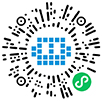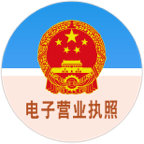今天网上看了地平线的领导的一段讲话,感受到了一些差异,不像几年前谦逊低调的态度,现在言语间有了些掩饰不住的傲气。这让我想到其他Tier 1的企业们对待车厂的态度的变化,也想到写这个主题,主机厂和Tier 1之间因为软件定义汽车而产生的重构。
随着软件定义汽车(Software-Defined Vehicle, SDV)概念的逐步落地,汽车产业正在经历前所未有的变革。这一变革不仅影响着车辆的设计与制造流程,更重新定义了主机厂与Tier 1供应商之间的权力关系。
1. SDV的崛起与技术主导权
传统汽车制造中,主机厂掌握了核心技术与生产流程,Tier 1供应商主要负责零部件的供应与集成。但在软件定义汽车的时代,软件技术逐渐成为核心竞争力,汽车的智能化、互联化、自动化功能日益增强。这意味着,越来越多的技术开发开始由软件供应商主导,主机厂与Tier 1供应商的合作模式也在发生深刻变化。
2. 主机厂的转型与自给自足
面对软件的主导地位,主机厂在转型过程中,许多开始加强自身的研发能力,尤其是在软件领域。一些传统的汽车制造商,如大众、奔驰和宝马,纷纷宣布将加大对软件开发的投入,力求掌握更多的核心技术。这些主机厂不仅依赖外部Tier 1供应商的硬件支持,还逐步将软件开发和平台搭建引入自身的研发体系,逐步推进“自给自足”的战略。
3. Tier 1供应商的挑战与机会
Tier 1供应商的角色也在发生变化。虽然他们依旧是硬件供应的主力,但在SDV时代,单纯的零部件供应商角色已经无法满足市场的需求。越来越多的Tier 1供应商正在转型为系统集成商,甚至在某些领域,他们开始涉足软件开发,试图在智能化技术上争取更大的话语权。例如,博世、大陆和采埃孚等企业已开始投资自动驾驶、车联网等领域,拓展自己的技术边界。
4. SDV时代的合作与竞争
尽管主机厂和Tier 1供应商的角色发生了变化,但他们之间的合作依然是至关重要的。在这一新兴的领域,技术更新换代速度极快,单靠一家企业的力量难以应对复杂的需求。双方在软件、硬件、系统集成等领域的深度合作,依旧是推动整个行业进步的关键。
然而,随着技术力量的逐渐倾斜,竞争也愈加激烈。主机厂与Tier 1供应商在SDV领域的争夺将不仅仅是产品的竞争,更多的是在未来智能化、网络化的汽车生态中的战略布局。
5. 未来展望
随着SDV技术的不断成熟,主机厂与Tier 1供应商之间的权力博弈将进入新的阶段。主机厂越来越依赖软件和数据驱动的汽车设计,而Tier 1供应商则面临着转型的压力和机遇。如何找到适应市场变化的商业模式,成为两者共同的挑战。
在这个过程中,行业的合作与竞争将共同推动汽车产业向着更加智能化、互联化的未来迈进。无论是主机厂还是Tier 1供应商,只有不断创新、拥抱技术变革,才能在这场新的竞争中占据有利地位。
?Software-Defined Vehicles (SDV): How Is the Power Dynamic Shifting Between OEMs and Tier 1 Suppliers?
As the concept of Software-Defined Vehicles (SDV) gains traction, the automotive industry is undergoing a profound transformation. This shift is not just reshaping vehicle design and manufacturing processes, but it is also fundamentally redefining the power dynamics between OEMs (Original Equipment Manufacturers) and Tier 1 suppliers.
1. The Rise of SDVs and the Shift in Technological Leadership
In the traditional automotive manufacturing model, OEMs have held the reins of core technologies and production processes, with Tier 1 suppliers focusing primarily on providing components and system integration. However, in the era of SDVs, software is becoming the central competitive force, with increasing emphasis on vehicle intelligence, connectivity, and automation. This shift means that software suppliers are taking a leading role in technological development, forcing OEMs and Tier 1 suppliers to adapt their relationships accordingly.
2. OEMs' Transformation and the Pursuit of Self-Sufficiency
As software takes center stage, many OEMs are investing heavily in internal R&D, particularly in the software domain. Traditional automakers such as Volkswagen, Mercedes-Benz, and BMW are increasing their investment in software development in an effort to gain control over more of the core technologies. These OEMs are no longer solely dependent on Tier 1 suppliers for hardware but are bringing software development and platform creation in-house, moving toward a "self-sufficiency" model.
3. Challenges and Opportunities for Tier 1 Suppliers
Tier 1 suppliers are also experiencing significant shifts. While they remain the primary providers of hardware, the SDV era demands more from them than simply supplying components. Many Tier 1 suppliers are transforming into systems integrators, with some even entering the software development space to gain more influence in the realm of intelligent technologies. Companies like Bosch, Continental, and ZF have already begun investing in areas like autonomous driving and connected vehicles, expanding their technical boundaries.
4. Collaboration and Competition in the SDV Era
Despite the shifting roles, collaboration between OEMs and Tier 1 suppliers remains critical. In this emerging field, the pace of technological change is rapid, and no single company can tackle all the challenges alone. Deep collaboration between the two parties, especially in software, hardware, and systems integration, continues to be essential for driving the industry forward.
At the same time, the shifting technological power dynamic is intensifying competition. The struggle between OEMs and Tier 1 suppliers in the SDV space will not only be about product competition but also strategic positioning in the future intelligent and connected vehicle ecosystem.
5. Looking Ahead
As SDV technology matures, the power dynamics between OEMs and Tier 1 suppliers will enter a new phase. OEMs will rely more on software and data-driven vehicle design, while Tier 1 suppliers will face both the pressure and the opportunity to transform. Finding the right business model to adapt to market changes will be a shared challenge for both sides.
In this ongoing transformation, both collaboration and competition will drive the automotive industry toward a more intelligent and connected future. Whether OEMs or Tier 1 suppliers, only those who continue to innovate and embrace technological change will secure a competitive advantage in this new landscape.
 芯耀
芯耀




 1036
1036





